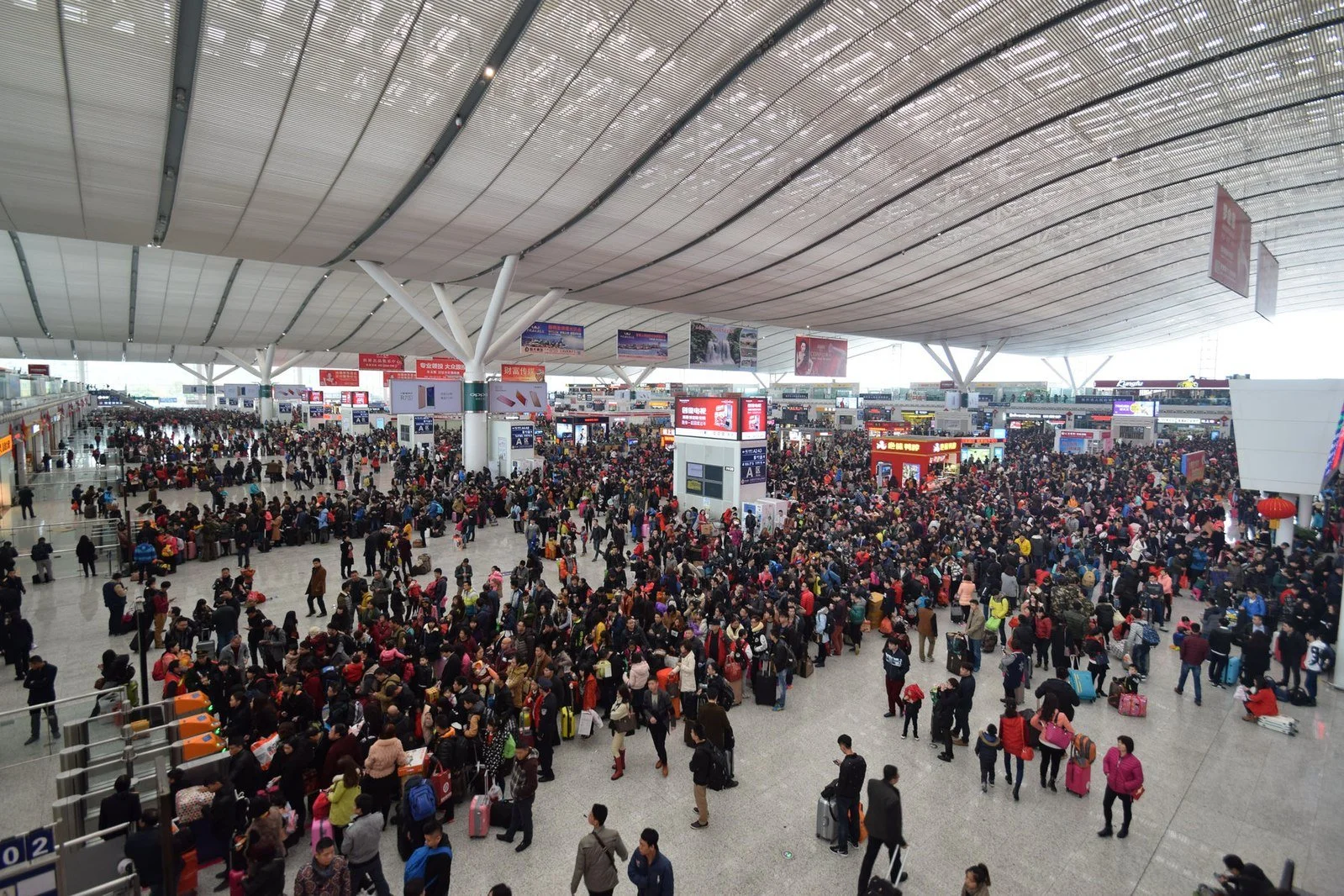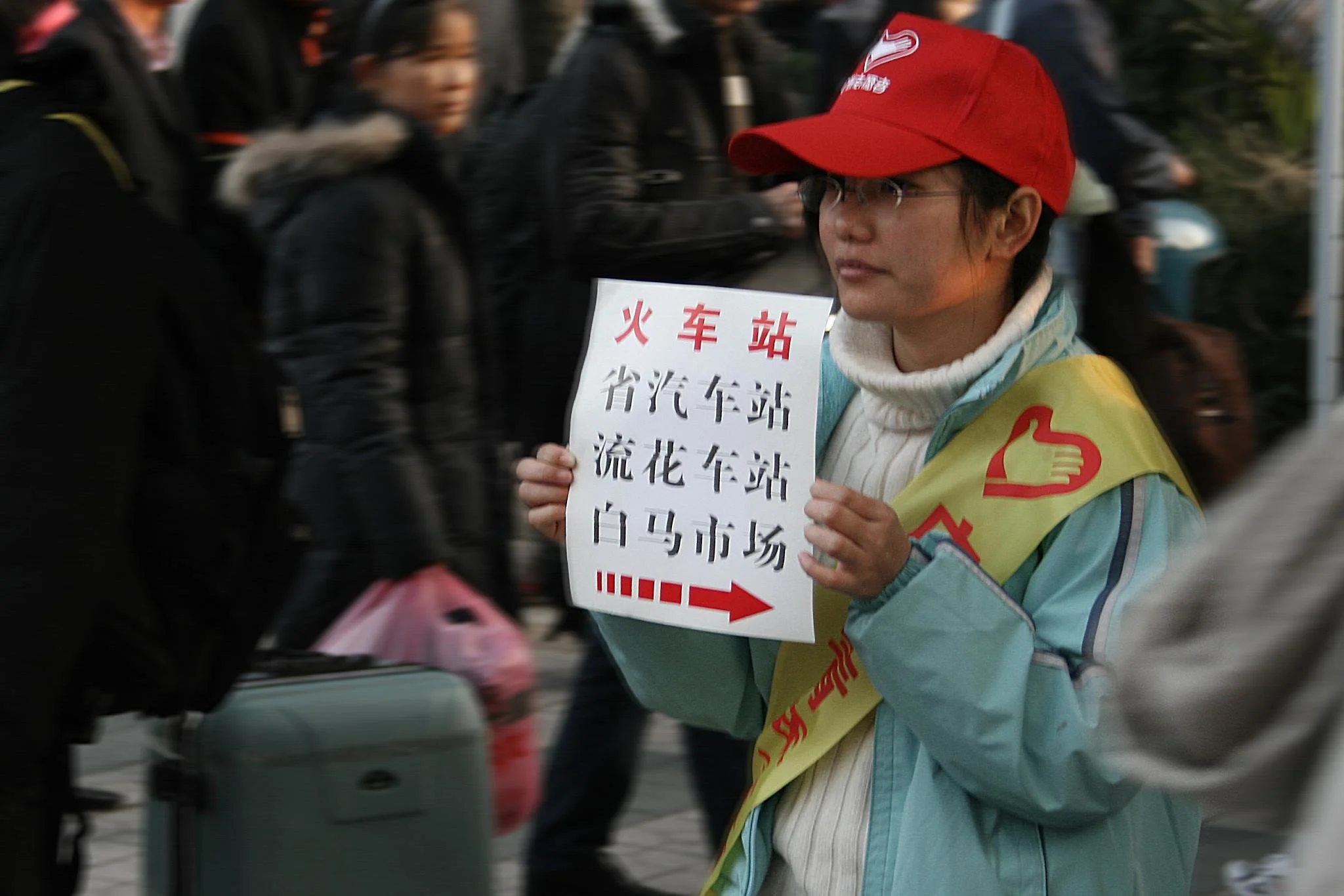Everything You Need To Know About China’s Annual Spring Festival Travel Rush
"Guangzhou Railway Station". Junyu Wang.CC BY-NC-SA 2.0.
What is the biggest annual human migration on earth?
Take a guess.
The pious Arbaeen and Hajj? The back-and-forth travel for Thanksgiving and Christmas?
The correct answer is a term you might not be familiar with, “Chunyun.” Taking place in China around the time of the Chinese New Year, its literal meaning is “the transportation during Spring Festival.”
Occupying the same level of importance as Christmas eve in Western culture, the holiday celebration for Chinese New Year usually begins in the middle of January and lasts for about two weeks. The traffic for returning home, however, can continue for as long as 40 days. During this time, most people, especially migrant workers who are away from home, pack up their luggage, dress in red which symbolizes good luck, and hurry to the train station.
A homecoming trip might seem like an individual choice, but considering a country with a population of 1.412 billion, the reunion became the biggest human event on an annual basis. In 2019, for example, the traveling volume reached approximately 415 million during the Spring Festival, which is more than the total number of people in the United States.
However, this only accounts for the tourist population, who went on vacation. The total number of the mass exodus can be close to 3 billion people. For them, the primary means of travel is through rail due to its affordability. In the year 2017, for example, China saw 356 million travel by rail, 58 million by plane, and 43 million by sea during the time of “Chunyun”.
Shenzhen North Railway Station Concourse 2016 Chunyun. Baycrest. CC BY-SA 2.5.
What prompted the migration is simple: New Year is always a time for family gatherings and celebrations, a tradition that is similar across geographical and cultural boundaries. Yet, the scale of its migration greatly surpasses that of Thanksgiving week in the United States, which is about 50 million.
In this sense, Chunyun is a long-standing public ritual that ties every aspect of the country together. The concept of Chunyun first appeared in the year of 1980, a time of massive modernization and cultural revival. Moving out from the shadow of an overplanned economy during the era of the Culture Revolution, people saw booming job opportunities that often concentrated on the coastal region such as Guangzhou and Shenzhen, which have better access to overseas markets. The number of migrants from rural areas increased from roughly 30 million in 1989 to more than 140 million in 2008. Many of them became the key contributors to the moving of millions of migrants during the Spring Holiday season.
The meaning of such a massive exodus is manifold. For many migrant workers, this might be the only chance to see their families in the span of a year, which brings joy, relief, and hope. They squeeze their personal belongings into the striped leather bag, making their way through the often jammed train station while expecting a great feast back home.
For the transportation system, it is time to test the operation of its ticket system and the stability of its intercity network. With millions starting to click on the purchase button at the same time, the demand often exceeds supply, and system crashes are not uncommon. This might leave disappointed passengers standing in the frigid winters, waiting for the next train home to arrive.
For the administrator, it means grappling with thieves and pickpockets in the overcrowded railroad station, as well as the black market of ticket scalpers during the busiest hour. Ticket prices also rise during the end of the year, and so does the crime rate.
For years, the public transportation system and local authorities in China implemented multiple measurement changes to facilitate the mobility of the homecoming population. In 2019, The length of the usable railway in China will reach 139,000 kilometers, and high-speed rail is about 35,000 kilometers. Technology, such as self-service counters, smart navigation systems, and real-time updates of traveling volume notices available on multiple map apps, quickens the process of traveling.
Volunteer helping with navigation in Guangzhou Railway Station. Junyu Wang.CC BY-NC-SA 2.0.
Chunyun had been rather silent for the past two years due to Covid-related restrictions. Authorities discouraged unnecessary travel; requirements including vaccination status, travel history, and contact with confirmed cases have thwarted population mobility; and people, fearful of being infected, were often forced to stay where they were.
However, with the loosening of restrictions in 2022, the world’s largest human migration is, once again, on its way. On January 14, a total of 42.27 million people in China were already traveling by rail, road, sea, and air across the country, which is a 57% increase from last year. More than 450 million people are expected to travel, and take trips in the coming 40 days. Train stations are bustling with migrant workers again.
Though there was worry about surges in Covid cases, most people are optimistic about going back to the normal state of travel. Tommy Xie, head of Greater China research at Oversea-Chinese Banking Corporation, said, “The congestion level in cities such as Beijing and Chengdu, which were first hit by the Covid outbreak, have recovered fully.”
As trains and planes, loaded with tens of thousands of travelers, go full steam around China, they also carry along countless stories to tell throughout the passing year, and hopes for a prosperous year ahead.
Hope Zhu
Hope is a Chinese international student at Wake Forest University in North Carolina studying sociology, statistics, and journalism. She dreams of traveling around the globe as a freelance reporter while touching on a wide range of social issues from education inequality to cultural diversity. Passionate about environmental issues and learning about other cultures, she is eager to explore the globe. In her free time, she enjoys cooking Asian cuisine, reading, and theater.




